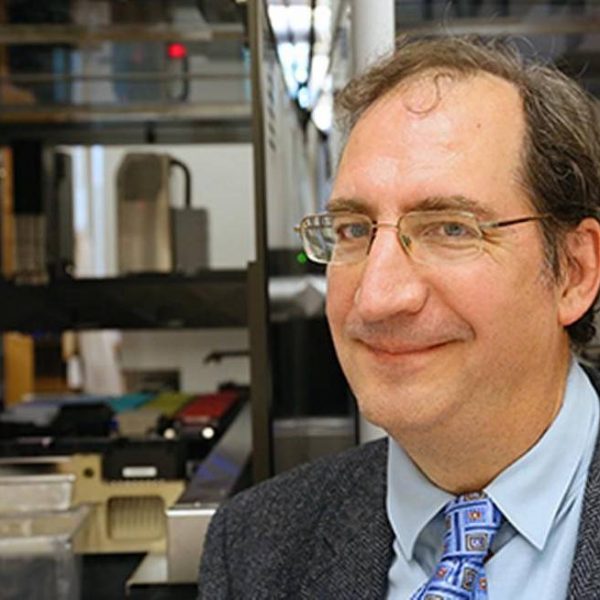Why LSD Lasts So Long, and Why Scientists Hope That’s a Springboard

A tiny tab of LSD on the tongue can produce a daylong trip through hallucinations and assorted other psychedelic experiences. Researchers at UNC’s School of Medicine have discovered precisely what the drug lysergic acid diethylamide looks like in its active state when attached to a serotonin receptor of a human brain cell. Their findings have revealed a major clue about why LSD’s psychoactive effects last so long.
How the drug causes such powerful effects has remained a mystery ever since 1938, when Swiss scientist Albert Hofmann first accidently synthesized and dosed LSD to report its effects. Now, because of work led by Dr. Bryan L. Roth, the Michael Hooker Distinguished Professor of protein therapeutics and translational proteomics at UNC, scientists can begin to parse how the drug sparks such a dramatic reaction in the brain, just as the scientific and medical communities renew interest in the drug as a potential treatment for a number of conditions, including cluster headaches, substance abuse and anxiety associated with life-threatening conditions.

Dr. Bryan L. Roth, the Michael Hooker Distinguished Professor of protein therapeutics and translational proteomics at UNC. (UNC photo)
“There are different levels of understanding for how drugs like LSD work,” Roth said. “The most fundamental level is to find out how the drug binds to a receptor on a cell. The only way to do that is to solve the structure. And to do that, you need X-ray crystallography, the gold standard.”
That is what Roth’s lab accomplished — essentially “freezing” LSD attached to a receptor so his team could capture crystallography images. It turns out that when LSD latches onto a brain cell’s serotonin receptor, the LSD molecule is locked into place because part of the receptor folds over the drug molecule, like a lid. And then it stays put.
The research was published in January in the journal Cell. Postdoctoral researchers Daniel Wacker and Sheng Wang led the experiments to crystallize LSD bound to a serotonin receptor and discover why it stays bound so long. “Serotonin, obviously, hits this receptor on brain cells,” Wacker said. “But our experiments show that serotonin does not interact with this lid in the same way LSD does.”
“We think this lid is likely why the effects of LSD can last so long,” said Roth, who holds a joint appointment at UNC’s Eshelman School of Pharmacy.
Roth said he hopes the work, which was funded by the National Institutes of Health, will lead to better drugs to treat psychiatric disorders. Research might be to produce something similar to LSD but without the hallucinogenic effects, he said. Better understanding of how LSD works is a first step in that direction.
Although other labs have reported that LSD “washes” out of the brain’s fluid within four hours, such experiments could not determine what was happening on or inside brain cells. Roth’s lab has shown for the first time that LSD is very much not washed out of the serotonin receptors located within the membrane of brain cells in a few hours.
Solving the structure of LSD could help drug developers design better psychiatric drugs with fewer side effects. Also, although LSD is illegal, it remains a popular recreational drug and not just for its most potent effects. Some people — most notably technology developers in Silicon Valley and elsewhere — report “microdosing” LSD to boost creativity, relieve stress and help them solve problems while avoiding its hallucinogenic effects.
Prior to becoming a pharmacology professor and researcher, Roth was a psychiatrist specializing in schizophrenia. Patients occasionally would report that their first schizophrenic break occurred while on LSD.
“They were never the same again,” Roth said. “Although this is rare, it has been reported. People also report flashbacks, and LSD is an extremely potent drug. So for those reasons, along with its potential as part of therapeutic treatment, LSD is scientifically interesting.”
He added: “We do not advocate using LSD; it is potentially very dangerous. But it could have potential medicinal uses, some of which were reported in the medical literature decades ago. Now that we’ve solved the structure of LSD bound to a receptor, we are learning what makes it so potent.”
Wacker said: “I think it’s important for the pharmaceutical industry to understand that if you modify just one tiny aspect of any compound, you might affect the way it sits in the receptor. And as a result, you might affect how the compound works.”
One in 10 people in the U.S. — tens of millions of people — have reported using LSD at least once in their lives.
